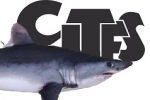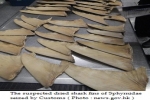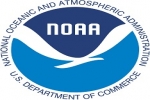CITES shark listings capacity building efforts recognised by UN General Assembly
Press Release Convention on International Trade in Endangered Species of Wild Fauna and Flora (CITES) 15. December 2015 —————— CITES shark listings capacity building efforts recognised by UN General Assembly in annual resolution on Sustainable Fisheries Geneva, 15 December 2015 – The resolution on Sustainable Fisheries1 (A/70/L.19) adopted unanimously on 8 December by the 70th
Preferred conservation polices of shark researchers
Published online on 12. December 2015 Preferred conservation polices of shark researchers David Shiffman and Neil Hammerschlag ABSTRACT: There is increasing concern about the conservation status of sharks. However, the presence of numerous different (and potentially mutually exclusive) policies complicates management implementation and public understanding of the process. Here we present the results of a
Suspected Hammerhead Shark Fins Seized By Hong Kong Customs
Press Release Hong Kong SAR Government News 14. December 2015 ————– Hong Kong Customs seizes suspected dried shark fins of Sphyrnidae at airport Hong Kong Customs seized about 16 kilograms of suspected dried shark fins of Sphyrnidae, an endangered species, and arrested a man at Hong Kong International Airport today (December 14). Customs officers intercepted
Molecular mechanisms underlying the exceptional adaptations of batoid fins
Published online before print on 07. December 2015 Molecular mechanisms underlying the exceptional adaptations of batoid fins Tetsuya Nakamura, Jeff Klomp, Joyce Pieretti, Igor Schneider, Andrew R. Gehrke, Neil H. Shubin ABSTRACT: Extreme novelties in the shape and size of paired fins are exemplified by extinct and extant cartilaginous and bony fishes. Pectoral fins of
Bahamian man bitten by shark off Andros Island
News Release U.S. Coast Guard 11. December 2015 ——— Coast Guard responds to reported shark bite victim in Bahamas MIAMI —The Coast Guard is responding a report of a Bahamian man who was bitten by a shark 67 nautical miles southwest of Andros Island, Bahamas. The 26-year-old man was reportedly fishing aboard a 76-foot trawling
Discards, hooking, and post-release mortality of porbeagle, shortfin mako and blue shark in the Canadian longline fishery
Published online on 08. December 2015 Discards, hooking, and post-release mortality of porbeagle (Lamna nasus), shortfin mako (Isurus oxyrinchus), and blue shark (Prionace glauca) in the Canadian pelagic longline fishery Steven E. Campana, Warren Joyce, Mark Fowler, Mark Showell ABSTRACT: Global discards of sharks greatly exceed reported landings, yet there are few estimates of mortality
Trends in the exploitation of South Atlantic shark populations
Published online on 04. December 2015 Trends in the exploitation of South Atlantic shark populations Rodrigo Barreto, Francesco Ferretti, Joanna Mills, Alberto Amorim, Humber Andrade, Boris Worm, Rosangela Lessa ABSTRACT: Approximately 25% of globally reported shark catches occur in Atlantic pelagic longline fisheries. Strong declines in shark populations have been detected in the North Atlantic
New Shark Enclosures for two Beaches in Reunion Island
Helmut Nickel (mail), Shark Year Magazine, 09. December 2015 The authorities in Reunion Island have designated the beaches of Boucan Canot and Roches Noires as locations for new seabed-to-surface barriers that are supposed to protect people by preventing sharks from entering the enclosed area. The two beaches are located in the commune of Saint-Paul on
Stable isotope study of a new chondrichthyan fauna (Kimmeridgian, Porrentruy, Swiss Jura)
Published on 07. December 2015 Stable isotope study of a new chondrichthyan fauna (Kimmeridgian, Porrentruy, Swiss Jura): an unusual freshwater-influenced isotopic composition for the hybodont shark Asteracanthus L. Leuzinger, L. Kocsis, J.-P. Billon-Bruyat, S. Spezzaferri, T. Vennemann ABSTRACT: Chondrichthyan teeth (sharks, rays, and chimaeras) are mineralized in isotopic equilibrium with the surrounding water, and parameters
Sex-specific and individual preferences for hunting strategies in white sharks
Published online on 28. November 2015 Sex-specific and individual preferences for hunting strategies in white sharks Alison V Towner, Vianey Leos-Barajas, Roland Langrock, Robert S. Schick, Malcolm J Smale, Tami Kaschke, Oliver J. D. Jewell, Yannis P. Papastamatiou SUMMARY: Fine-scale predator movements may be driven by many factors including sex, habitat, and distribution of resources.
On the attribution of authorship for several elasmobranch species in Müller and Henle’s Systematische Beschreibung der Plagiostomen
Published on 07. December 2015 On the attribution of authorship for several elasmobranch species in Müller and Henle’s Systematische Beschreibung der Plagiostomen (Chondrichthyes, Elasmobranchii) Christian M. Jones, William B. Driggers III, José I. Castro, Marcelo R. De Carvalho INTRODUCTION: Even in light of the recent peak in new species descriptions of elasmobranchs (summarized in White
NOAA: 12-Month Finding for 7 Foreign Elasmobranch Species Under the Endangered Species Act
National Oceanic and Atmospheric Administration (NOAA) 50 CFR Parts 223 and 224 RIN 0648–XE184 Endangered and Threatened Wildlife and Plants; 12-Month Finding for 7 Foreign Species of Elasmobranchs Under the Endangered Species Act A Proposed Rule by the National Oceanic and Atmospheric Administration on 12/07/2015 Agency: National Marine Fisheries Service (NMFS),







